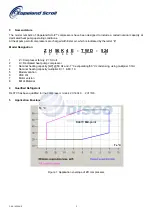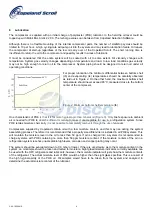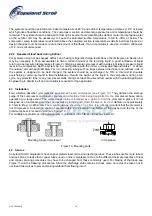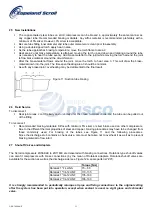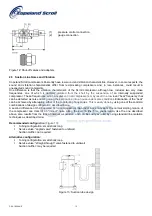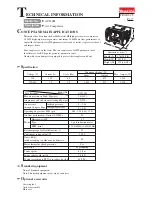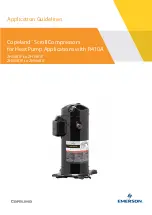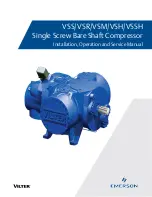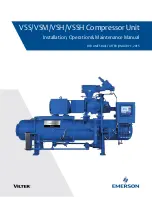
20 High Potential Testing
Copeland subjects all motor compressors to a high voltage test after final assembly. This is carried out according to
IEC-34-1.
Since high voltage tests lead to premature aging of the winding insulation we do not recommend additional tests of
that nature. They may also be carried out with new machines only.
If it has to be done for any reason disconnect all electronic devices (e.g. motor protection module, fan speed control,
etc.) prior to testing. The test voltage of 1000 V plus twice the nominal voltage is applied for 1 - 4 seconds between
motor winding (each one of the phases) and the compressor shell: The maximum leak current limit is approximately
10 mA. Repeated tests have to be performed at lower voltages.
Caution
: Do not carry out high voltage or insulation tests if the compressor housing is under vacuum. Copeland Scroll
compressors are configured with the motor down and the pumping components at the top of the shell. As a result, the
motor can be immersed in refrigerant to a greater extent than hermetic reciprocating compressors when liquid
refrigerant is present in the shell. In this respect, the scroll is more like semi-hermetics (which have horizontal motors
partially submerged in oil and refrigerant). When Copeland Scroll compressors are high potential tested with liquid
refrigerant in the shell they can show higher levels of leakage current than compressors with the motor on top
because of the higher electrical conductivity of liquid refrigerant than refrigerant vapour and oil. However, this
phenomenon can occur with any compressor when the motor is immersed in refrigerant. The levels of current leakage
do not present any safety issue. To lower the current leakage reading the system should be operated for a brief
period of time to redistribute the refrigerant to a more normal configuration and the system high potential tested again.
21 Compressor Functional Check
It is not desirable to perform functional compressor tests where the compressor is turned on with the suction service
valve closed to check how low the compressor will pull suction pressure. Rather, the following diagnostic procedure
should be used to evaluate whether the Copeland Scroll compressor is functioning properly.
1. Proper voltage to the unit should be verified.
2. The normal checks of motor winding continuity and short to ground should be made to determine if an internal
motor short or ground fault has developed. If the protector has opened, the compressor must be allowed to
cool sufficiently to allow it to reset.
3. Proper indoor and outdoor fan/blower operation should be verified.
4. With service gauges connected to suction and discharge pressure fittings, turn on the compressor. If suction
pressure falls below normal levels the system is either low on charge or there is a flow blockage in the
system.
5. If suction pressure does not drop and discharge pressure does not rise to normal levels, reverse any two of
the compressor power leads and reapply power to make sure compressor was not wired to run in reverse
direction. If pressures still do not move to normal values, the compressor is faulty.
22 Excessive Liquid Floodback
The following tests are for those Air/Water system configurations and charge levels, which need special testing to
verify exemption from the need of an accumulator.
22.1 Continuous
Floodback
To test for excessive continuous liquid refrigerant floodback, it is necessary to operate the system in a test room at
conditions where steady state floodback may occur (low ambient air/water heating). Thermocouples should be
attached to the suction and discharge lines of the compressor (approximately 150 mm from the shell) and insulated. If
the system is designed to be field charged it should be overcharged by 15 % in this test to simulate overcharging
commonly found in field installations.
C6.2.16/1004/E 9




